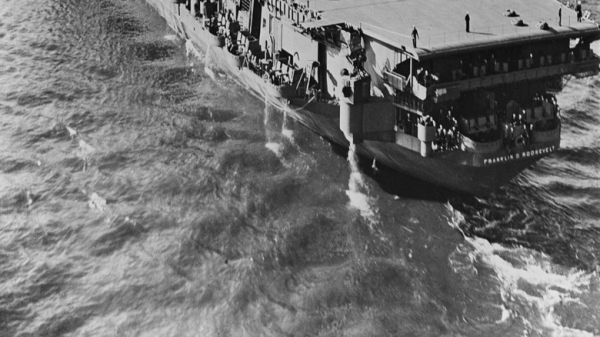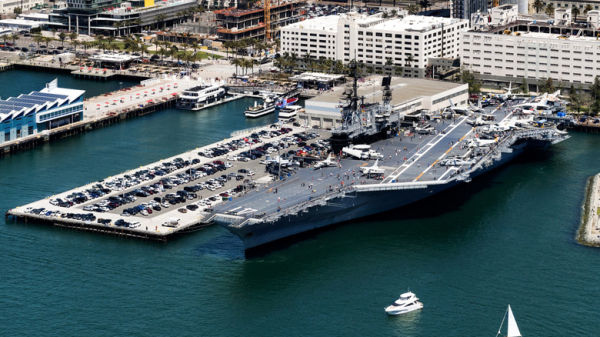It’s hard to understate just how much the aircraft carrier has changed the face of naval warfare, as well as global geopolitical power itself since the beginning of the Second World War. Throughout the World War II, and during the 80 years that have followed it, the American aircraft carrier has evolved immensely, launching from its decks everything from prop-driven Wildcats and Corsairs to the latest F-35 C Lightning II fighters.
While the heroic stories of the US Navy’s World War II aircraft carriers are well known, and today’s highly advanced nuclear carriers continue to project power and protect American interests worldwide, history has a tendency to overlook some of the earlier, but no less pivotal carriers that were developed and served in between World War II and the modern era.
The Midway-Class carrier is a perfect example of this transitional era of aircraft carrier development. Initially designed for service in World War II, Midway Class ships underwent several major modernizations during the postwar years that kept the class in service all the way through Desert Storm in the early 1990s, long after newer ships had it made ‘obsolete’. This impressive evolution and adaptability, along with a distinguished list of combat achievements, have made the Midway Class ships a vital part of US Naval history.
Taking the carrier into a new era
World War II was still raging when the Midway Class aircraft carrier was being developed, but the war officially came to a close just a week before the lead ship of the class, the USS Midway was commissioned on September 10, 1945. Taking its name from the decisive, war-changing Battle of Midway in the Pacific, in which the American aircraft carrier played the key role.
The Midway Class carriers were a toughened, modernized upgrade over the Essex-Class carriers that served in the later years of World War II, with a stronger armored flight deck, and the ability to carry more aircraft being a key evolution from earlier carriers. A total of three Midway-Class carriers would be built during the second half of the 1940s, with the USS Franklin D. Roosevelt and the USS Coral Sea rounding out the trio.
Though the fighting of World War II was over, the late ’40s and 1950s would be a pivotal time for naval aviation as the transition was made from prop-driven aircraft to jets. The large, armored decks of the Midway-Class were the perfect testbeds for early jet carrier operations. When it became clear that jets were the future, carrier design would be updated with angled decks, stronger catapults and arresting gear, and secure storage for jet fuel. But rather than replacing the WWII-era Midway-Class ships with newer carriers, the Navy decided to upgrade them, adding angled flight decks and enclosed hurricane bows.
The legend of the Midway lives on
The upgrades to the Midway-Class carriers kept them important part of the fleet even as the newer, so-called ‘supercarriers’ came into service. Midway-Class ships would serve in Vietnam, and in support of many conflicts that followed. The USS Coral Sea would earn the nickname ‘Ageless Warrior’ thanks to its long service and extensive upgrades that kept it in the fight alongside its younger counterparts.
By the time the first of Midway-Class carrier, the USS Roosevelt, was retired in 1977, nuclear-powered carriers were the new standard for the US Navy, leaving the conventionally powered ships as antiquated equipment. Even so, both the USS Coral Sea and USS Midway continued to serve through the 1980s, with the Midway getting one last major combat deployment in the Persian Gulf for Operation Desert Storm before it was decommissioned in 1992.
Both the USS Roosevelt and USS Coral Sea would end up being scrapped after their service, but the USS Midway would have a brighter future after its fighting days were over. In 2004, the Midway was relocated to San Diego where joined the list of several retired aircraft carriers used as museum ships across the United States. Since then, the USS Midway Museum has become a San Diego landmark and a popular destination for over one million visitors annually.







